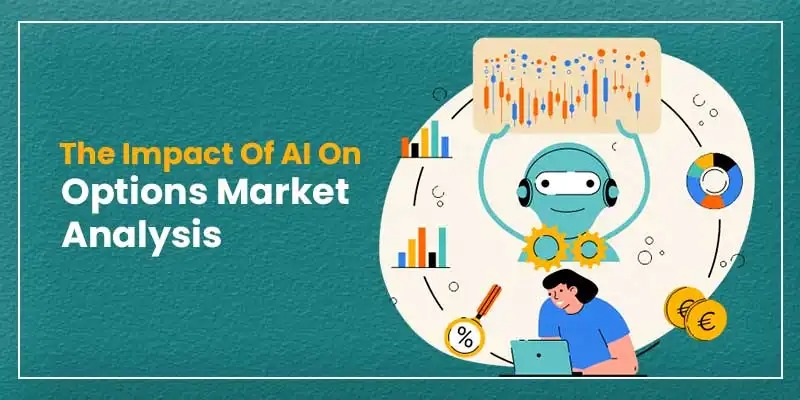AI is playing an increasingly significant role in options market analysis through powerful algorithms and real-time data processing. By automating data collection and pattern recognition, AI enhances traders’ ability to analyze trends and formulate strategies. This article explores AI’s role in options trading, its benefits, and the key considerations traders should keep in mind.
Contents
- The Role of AI in Options Market Analysis
- Data-Driven Decision Making
- Advanced Algorithms for Pattern Recognition
- Enhanced Trading Strategies
- Market Sentiment and Volatility Analysis
- Limitations and Considerations
- Conclusion
- FAQs
The Role of AI in Options Market Analysis
AI leverages machine learning, statistical models, and pattern recognition to analyze large volumes of market data. By automating data collection and processing, AI can identify patterns and correlations that might not be easily detected through traditional methods. This assists traders in gaining timely insights for strategy formulation.
Read Also: How To Read An Options Chain: A Guide For Indian Investors
Data-Driven Decision Making
AI facilitates a data-driven approach to options trading by analyzing historical and real-time data. Advanced algorithms identify trends and correlations that assist traders in making informed decisions based on quantitative insights rather than intuition. AI is a powerful tool for understanding the complicated world of options trading because it can constantly learn and change based on new information.
Advanced Algorithms for Pattern Recognition
AI employs advanced algorithms, including statistical models and neural networks, to detect trends in market data. By analyzing price movements, trading volumes, and historical patterns, AI helps traders identify potential trading opportunities.
Enhanced Trading Strategies
AI enhances trading strategies by analyzing real-time market conditions and executing predefined trade rules. Machine learning-based systems assist traders in refining strategies and improving execution efficiency.
Adding AI also helps to make trade methods more diverse by simulating different market situations. This feature helps traders look at a wide range of options without doing a lot of hard work. For this reason, it helps to make trade more fair.
Market Sentiment and Volatility Analysis
AI contributes to market sentiment and volatility analysis by processing data from news sources, financial reports, and social media. By quantifying sentiment trends, AI assists traders in assessing potential market movements. Mixing this sentiment research with quantitative data gives you a complete picture of how the market acts.
Consequently, traders can better comprehend the market’s fundamentals and modify their tactics accordingly. These kinds of subtle findings help us understand market changes better. It gives people who make decisions more power to act with more trust.
Also Read: Key Factors That Influence Option Pricing
Limitations and Considerations
Even though AI enhances options market analysis, it has limitations. AI models rely on high-quality data, and inaccurate or biased inputs can lead to incorrect predictions. Additionally, rapid market shifts require continuous model calibration to maintain relevance. Traders should use AI as a supplementary tool rather than a standalone decision-making system.
Also, remember that these high-tech systems should not replace human researchers’ knowledge; they should work with them. It is most likely that the most reliable results will come from a balanced method that mixes human opinion with insights gathered by AI.
Conclusion
AI plays an increasingly important role in options market analysis by enabling data-driven insights and improving pattern recognition. AI is helping traders understand complicated market signs and develop new strategies using advanced algorithms. Adding new technology to options market analysis will help people make smarter and more flexible choices as technology improves. It will open the door to a new era of market analysis.
Disclaimer: Investments in the securities market are subject to market risks; read all the related documents carefully before investing.
FAQs
AI employs machine learning and statistical models to analyze historical and real-time market data, identifying potential trends and correlation.
AI supports traders by processing vast amounts of data efficiently, but human expertise remains essential for strategy formulation and risk management.
AI analyzes structured data such as historical price trends and trading volumes, as well as unstructured data from news, reports, and sentiment analysis.

